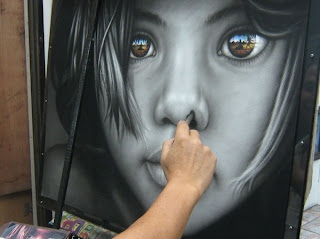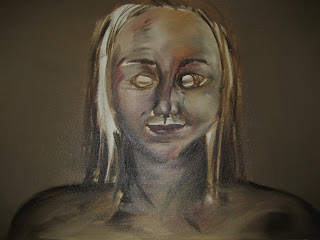Idea 1:
When thinking about what I wanted to do for my last project I began thinking about things that I liked or that excited me. One of the first images that came to mind was the giraffe-- by far my favorite wild animal which I hope to one day see in its natural environment. I shuffled through my thoughts to try to think about what it was that I liked so much about the giraffe... the pattern of its coat, its shape, its eyes, personality (yes I feel animals do have personalities) etc.? I came to the agreement with myself that it wasn't just one specific trait but rather a combination. The giraffe physically has a very bold shape, however it also seems to have very gentle characteristics. Thinking metaphorically or comparatively to a person I would think the giraffe would be a person unafraid of who they are, yet is humble and unpompous (which I would consider to be desirable characteristics).
Idea 2:
Next I went on to think about exciting memories that I had. Immediately images from my experiences in the Amazon and Galapagos came to mind. Specifically the image of a canopy (bridge) that was up about 32-35 meters in the rainforest trees. Initially the idea of trust came to mind when I looked back on this images. Trust was held in the people teaching me how to use the safety equipment (in another language), trust in myself, as well as trust in the construction itself. I also thought about how fast it took me to trust all these different division, which was kind of interesting and in some ways a little unsettling when thinking back on it.
Idea 3:
I then branched off of idea number 2 and focused more on the image/subject of the bridge itself, and what it does. I've always found bridges to be beautiful and intriguing structures. After breaking down and thinking what it is that the bridge does I was able to think about it metaphorically in relation to life. Literally the bridge is a connector between two places. Sometimes between two pieces of land while passing over water, sometimes simply passing over another road or in the image I was thinking about from in the amazon, it connected one tree to another. Now those trees had something in common and had some kind of physical relationship. Connections are something that I see throughout my life in so many ways, and I love when they arise and show them self to me. I feel it is connections that really help one grow as a person. When thinking about connection in my life I thought both about connections that I have with other people as well as connections of how one thing relates to another. Throughout my life I liked to be involved in a variety of things. Music, dance, art, sports and academics. And although some may be more distantly related than others I feel there is always some way that they connect. For instance while learning and playing the violin, when we were taught how to play different notes, in many cases there was more than one way to play the same note. Often times the difference was between playing the open string, without holding down the string with any fingers (which seemed easier) and using the placement of your finger on another string to create the "same" note (which usually seemed a little more difficult). In later years of studying the violin, the open string was something thought of as being unacceptable to use. For the longest time I didn't understand why, but meanwhile I was also learning more about art/painting and how rarely you apply paint directly from the tube. It wasn't until I made a connection with something that seemed to make more sense to me that I was able to understand what I had been told about using this alternative method of playing a note. By mixing and using a variety of colors instead of using a color straight from the tube, the color becomes richer, adds dimensionality and seems to give me more control to sensitive details. In comparison, playing a note by pressing my finger on a violin string rather than just playing the same note on the open string, it is like the many colors in painting, it gives a musician more control to the note creating a richer and more powerful sound because now vibrato could be used. This is just an example of one connection and the relationship between two different things, but it shows how connections and finding relationships can help grasp ideas or give reason to things which in our world, people, including myself, find as something satisfying or desirable.











































